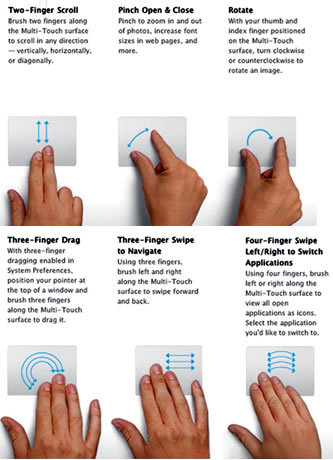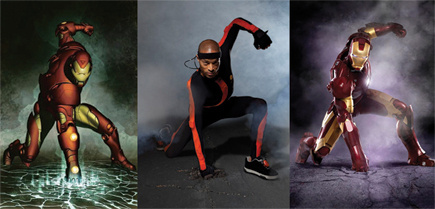This year will be a year when 3D gesture recognition technology proves that it is not limited to children's games. A few years after the first wireless gaming interface for Nintendo Wii, MEMS sensor-based gesture recognition technology has extended its tentacles to smartphones and is poised to occupy the most symbolic consumer interface: TV remote control.
Since the Wii was released in 2006, Nintendo ’s competitors have developed their own 3D gesture recognition and processing technology. Sony provides a Move Playstation controller for game enthusiasts seeking high-precision control; Microsoft has implemented the hands-free function of the game interface through Xbox Kinect.
Apple took the lead in using the potential of micro-electromechanical sensors to successfully build a more intuitive smart phone interface, and added a MEMS accelerometer to the iPhone in 2007 and a MEMS gyroscope in 2010. Apple ’s competitors are close behind, and soon many 3D commands (such as shake-undo, lift-answer, and reverse-down-disconnect) will become standard smartphone features.
Today, consumer product OEMs are adding 3D gesture recognition capabilities to their full line of products. Some companies use technology licenses obtained from GestureTek, while others obtain licenses from Hillcrest Laboratories or Movea. Movea has more than 250 related patents, covering technologies like controlling the cursor with a gyroscope; Hillcrest has more than 100 patents, including the use of accelerometers and gyroscopes to track motion. Both companies provide value-added software development tools for 3D gesture designers. They are Movea's Gesture Builder and Hillcrest's Freespace MotionStudio.
Google added a MEMS-based gesture recognition application programming interface to the Gingerbread (gingerbread) version of the Android operating system, capable of identifying actions such as tilt, rotation, insertion, and cutting.
"Motion processing will eventually be accepted by mainstream consumers." InvenSense founder Steve Nasiri said, "We predict that hardware for motion processing and gesture recognition will be popularized in smartphones like camera modules." The company is The first MEMS chip manufacturer to integrate accelerometers and gyroscopes on a single die.
InvenSense's gyroscope and accelerometer / gyroscope combination chip embeds a motion processor to perform complex sensor fusion algorithms necessary to recognize user gestures, and helps offload application processor tasks. InvenSense plans to integrate accelerometers, gyroscopes and magnetometers (electronic compasses) on a single die next year.
At the International Consumer Electronics Show (CES), InvenSense ’s motion processing database appeared for the first time in TV remote controls and smartphones. The former is used to realize 3D gesture recognition, and the latter is used for basic phone functions (such as simply taking When you get close to your ear, you can answer the phone). Both products are products of LG Electronics. Magic Motion remote control is used for LG's Infinia series 3D TV. LG's 9.2mm wide Optimus Black smartphone is said to be the thinnest smartphone in the world and can recognize a variety of unique gesture commands.
Other MEMS chip manufacturers have also integrated gesture recognition algorithms into their accelerometers and gyroscopes. For example, Kionix has dozens of models with integrated gesture recognition algorithms, and the company ’s Gesture Designer software development kit can help OEMs design their own gesture control effects.
"TV remote control companies are working hard to integrate gesture recognition technology into their products, which requires very complex motion applications." Kregix CEO Greg Galvin pointed out, "The highlight here is the focus on audio-visual input functions on TVs Allows users to switch channels, download music, browse photo libraries, or word processing and Internet surfing through a remote control. "
Executing applications and browsing website content on IPTV requires that the remote control has the same precision as a mouse for click and gesture-based control. "These applications do require MEMS." Galvin said.

Apple users are already very familiar with 2D gesture control, and instructions like pinch-to-zoom have been fully used by Apple ’s computing and smartphone rivals.
The Year of Smart TV
Dan Simpkins, founder and CEO of Hillcrest, believes that 2011 is the "year of smart TV" and adds, "For more than 50 years, the TV market has finally ushered in a new input technology for the first time." Hillcrest's Loop The pointer is an air mouse designed specifically for consumers who want to connect a computer to a TV, and uses the Kylo browser developed for IPTV.
The Magic Motion remote control displayed by LG at CES uses Hillcrest's Freespace gesture recognition technology, which can help users browse web-based and traditional TV content through a complex point-and-click interface.
Philips uWand is one of the competitive technologies. Philip's handheld controller uses an integrated infrared camera to detect the infrared light emitted by the TV, and does not require a gyroscope to achieve accurate motion tracking. But most other IPTV remote controls use MEMS gyroscopes.
For example, Movea announced at CES that the notebook keyboard supplier Taiwan ’s Sunrex will launch a controller later this year that will use Movea ’s MEMS-based MotionIC platform and SmartMotion technology to achieve 3D gesture recognition.
"The next generation of sports remotes will be able to recognize all kinds of new gestures." Said Dave Rothenberg, global marketing manager of Movea. "For example, parents can use the air to sign the signature to unlock the adult content on the TV. Do the same when a child enters the room The action will activate the parental control function again. "
Microsoft's Kinect challenged traditional wisdom by moving gesture detection hardware, including MEMS accelerometers, out of the user's palm and into the head-end unit. Microsoft developed its own 3D recognition algorithm for Kinect based on the optical recognition technology license obtained from GestureTek.
Kinect categorizes gestures within the strict range of actions in certain games (such as virtual volleyball). The technology uses lasers to project a set of regular infrared dots onto the player to segment the image, and then measures the reflection intensity of each point. The reflection point with lower intensity is considered to be reflected from the background, and the stronger reflection point is considered to be reflected from the user in the foreground. Kinect then uses the best guesses about user actions to drive the avatars in the game. Kionix's MEMS accelerometer helps to point the camera at the user more accurately.
This technology sacrifices a certain accuracy in exchange for user mobility, according to analysts. "I don't believe that Microsoft's camera-based identification system has high enough accuracy to satisfy many gamers. They may be willing to continue to hold the controller, making Sony's Move a better choice for game enthusiasts." Senior Analyst, iSuppli Jérémie Bouchaud pointed out.
"The Microsoft solution is suitable for its targeted users: families who want to quickly enter and leave the game and want a convenient and instant experience," said Piers Harding-Rolls, head of games at IHS Screen Digest. "On the other hand, Sony's Move is a hybrid solution that uses sensors to track motion and cameras to track position. At this stage, Sony's theory is to provide game enthusiasts with more accurate sensor technology."
Camera-based technology like Kinect "is not the terminator of gesture recognition. It has its market, but the accelerometer-gyro combination also has its own market." Jim Tully, an analyst at Gartner.
"For example, the Kinect camera cannot detect complex movements in multi-user situations, especially when one user is blocked by another user. The effect is not good when the user is facing away from the camera ... these times require multiple cameras, which In most cases it is not feasible. "
But GestureTeck said that optical gesture recognition technology will eventually defeat MEMS-based devices. By observing changing camera images, the company's technology has tracked the 3D motion of millions of mobile phones.
"Today, the resolution and accuracy of optical gesture recognition is not as good as when using MEMS inertial sensors, but it is enough for most games." Vincent John Vincent, co-founder and president of GestureTek, pointed out that As the rate continues to increase, we believe that optical gesture recognition will eventually exceed MEMS, be able to track the movement of each part of the body, and achieve pixel-level accuracy. "

The actor (middle) wearing Xsens' MVN Motion Capture stretch fiber suit is covered with ADI's MEMS inertial sensors. He imitates the characteristic gestures (left) in the legendary cartoon "Iron Man" illustrations, as the basis for the creation of Paramount Pictures "Iron Man 2" (right) animation. (Source: Marvel, Xsens, Paramount)
Infrared beam, infrared sensor, cursor + button to the receiver through RF (Source: Philips)
Philips uWand technology is very suitable for the same applications as MEMS-mounted controllers, but does not use MEMS devices. Instead, it integrates an infrared camera to detect infrared light from the TV, so motion tracking can be achieved without a gyroscope. (Author: Bell Rock)
Please continue to follow
3D gesture control technology: from game consoles to consumer electronics (2)
"Cadillac" in the field of gesture recognition
Like the accuracy value that game enthusiasts may recognize, the game itself is not as important as game development or special effects movie animation. For animation experts, the "Cadillac" in the field of gesture recognition is Xsens Technologies' bodysuits studded with MEMS. The accelerometer and gyroscope on this set can realize real-time animation sequence preview ...
Wpc Fences,Wpc Picket Fence,Wpc Fence Panel,Composite Fencing Panels
ZHEJIANG DEQING GONAT FENCE CO.,LTD , https://www.gonatpvcfence.com
